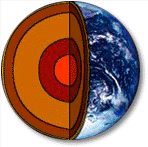 |
 |
This Just In ....
|
|
The President today announced his intent to nominate
Dr. Neal F. Lane as Director of the Office of Science
and Technology Policy, and Dr. Rita R. Colwell as
Director of the National Science Foundation (NSF).
[More: White House Announcements
and Related Statements.]
Good News for U.S. Research & Education

NSF Director Neal Lane on the
Fiscal Year 1999 Budget Request
"The good news for NSF begins at the bottom line.
The total budget comes to just under $3.8 billion.
This represents a substantial increase -- 10% overall
-- over $340 million. If enacted, this would be the
largest dollar increase the Foundation has ever received
-- as the President noted in his State of the Union
address. When we think about numbers like these, it's
only natural to ask what this increased investment
allows us to do.
More...
|
 |

Oceanographers Study Toxic
Organism that Contaminates Shellfish
Oceanographers at
the University of Rhode Island in Narragansett are
studying blooms of toxic "red tide" organisms with
a grant from NSF. The microscopic organisms, dinoflagellates
in the genus Alexandrium, create neurotoxins responsible
for paralytic shellfish poisoning, which in turn often
leads to closure of shellfish beds. The neurotoxins
produced by the dinoflagellates are accumulated by
filter-feeding shellfish, then passed on to humans
consuming such "tainted" shellfish.
More...
|
 |

Minerals Behave
Differently at High Pressures
Geologists are quite
certain about iron. They know, for example, that it
is a versatile magnetic metal with many uses, and
that in most of the minerals on the Earth's surface
iron oxidizes into ions. Iron ions that are missing
two electrons are called ferrous iron, and those missing
three electrons are called ferric iron. However, geologists'
certainty about iron is only as deep as the Earth's
surface. Closer to Earth's center, the pressure becomes
intense, causing iron, along with other minerals,
to lose its familiar characteristics.
More...
|
 |

Newly
Declassified Submarine
Data Will Help Study of Arctic Ice
A treasure-trove of
formerly classified data on the thickness of sea ice
in the Arctic Ocean, gathered by U.S. Navy submarines
over several decades, is now being opened. Data from
the first of approximately 20 cruise tracks -- an
April, 1992 trans-Arctic Ocean track -- has just been
released, and information from the rest of these tracks,
or maps of a submarine's route, will be analyzed and
released over the next year-and-a-half.
More...
|

|
 
|

